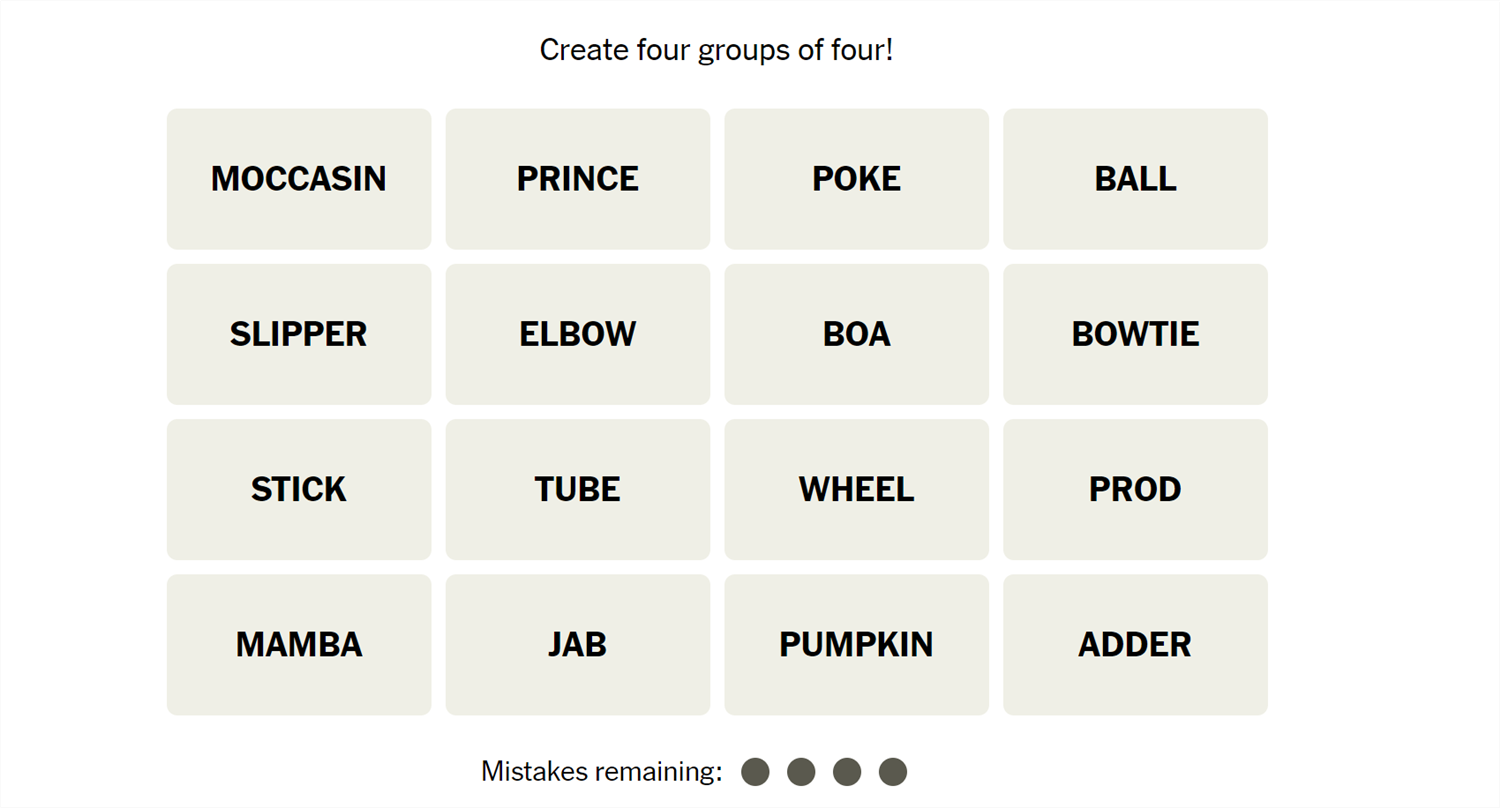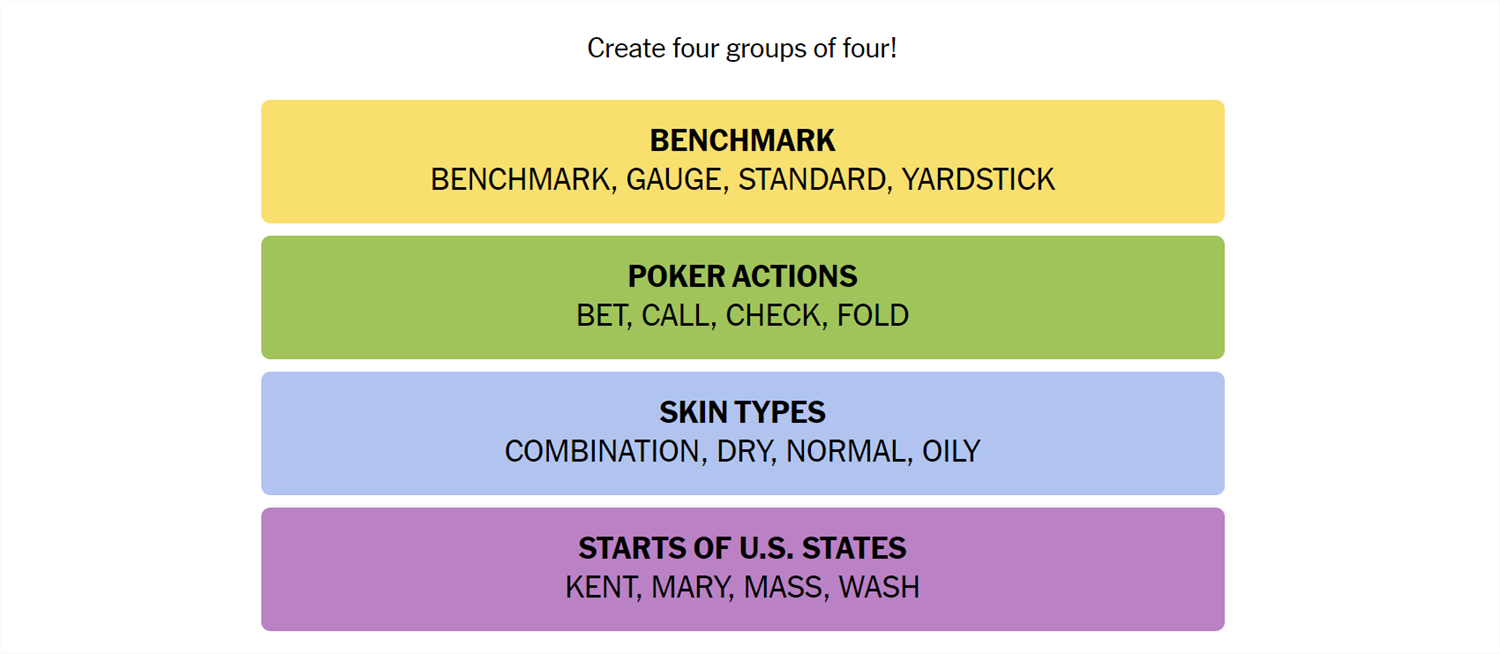Connections is a game from the New York Times that challenges you to find the association between words. It sounds easy, but it isn’t—Connections categories can be almost anything, and they’re usually quite specific. If you need a hand getting the answers, we’ve got you covered.
What Is Connections?
Connections is a game from the New York Times. The objective is simple: sort 16 words into groups of 4. Each group of words will be connected by some common idea or theme. That common element could be anything. We have seen everything from games that rely on the number of letters in the words to categories that require you to spot an extra letter at the end of the word. Sometimes they’re references to economics, other times they reference fairy tales. There is no telling what sort of association there will be between words.
Once you’re confident you understand the connection, select 4 words, then hit “Submit.” You have only four attempts in total, so don’t be too guess-happy.
Hints for Today’s Connections Categories
Here are a few small hints for the 297th Connections game to get you started:
- Yellow: Measurements.
- Green: Found in Casinos.
- Blue: Each requires a different moisturizer.
- Purple: What has been omitted?
What Are Today’s Connections Categories?
If you still need help, the actual categories are:
- Yellow: Benchmark
- Green: Poker Actions
- Blue: Skin Types
- Purple: Starts of U.S. States
Today’s NYT Connections Answers
Yellow:
Benchmark, Guage, Standard, Yardstick
Green:
Bet, Call, Check, Fold
Blue:
Combination, Dry, Normal, Oily
Purple:
Kent, Mary, Mass, Wash
How Did We Solve This Connections Game?
April 3rd’s game was pretty average difficulty. The words wash, dry, and fold did lead us to think a bit too much about laundry.
Once we stopped thinking about clothes, bet, call, check, and fold were easy to tie together as poker terms. They belong to the Green category, “Poker Actions.”
Gauge, standard, and yardstick are all related to measurements. Unfortunately, both mass and benchmark could be, too. Without more to go on, we just randomly included benchmark and got lucky. Those four words—benchmark, gauge, standard, and yardstick—comprised the Yellow category, which was also named “Benchmark.”
The remaining 8 were a bit less clear. Eventually, repeatedly shuffling the board resulted in kent, mary, mass, and wash all lining up together, and the connection just suddenly dawned on us: they’re states! The Purple category was “Starts of U.S. States,” and the states referenced were Kentucky, Maryland, Massachusetts, and Washington.
The last category is obviously blue, but even with only four words left, the connection wasn’t clear. It turns out that Blue was “Skin Types.” This is probably a sign we need to up our skincare game.
How Do You Guess Connections Categories?
There is no quick, reliable way to approach Connections like there is with Wordle, since Connections isn’t algorithmic. However, there are a few things to keep in mind that can help.
- Look for similar parts of speech. Are some words verbs and others nouns? Are some adjectives? Try mentally grouping them based on those categories and see if any other patterns jump out at you.
- Are the words synonyms? Sometimes categories will just be synonyms for a phrase, or very close to synonyms. Don’t rely too closely on this, though. Occasionally, Connections will deliberately throw in words that are sometimes synonyms to mislead you.
- Try saying the words. Sometimes, saying the words helps. One puzzle we saw included the words go, rate, faster, clip, pace, speed, move, commute, and hurry—all of which are obviously related to the idea of motion. However, when you say them, it becomes a little more obvious that only four (go, move, hurry, faster) are things you’d actually say to prompt someone to get moving.
- Expect the red herring. Connections usually has words that could be plausibly, yet incorrectly, grouped together. Take the words Bud, Corona, and Light, as an example. You might instinctively see those three words together and assume they’re lumped together in a category related to beer—but they weren’t.
- Look for distinct words. If a word on your board doesn’t have multiple meanings or can really only be used in one context, try using that word as the basis for a category.
If you didn’t solve this one, don’t feel too bad—there’s always tomorrow! And those words may align with a topic you’re interested in, giving you a leg up on the competition.



